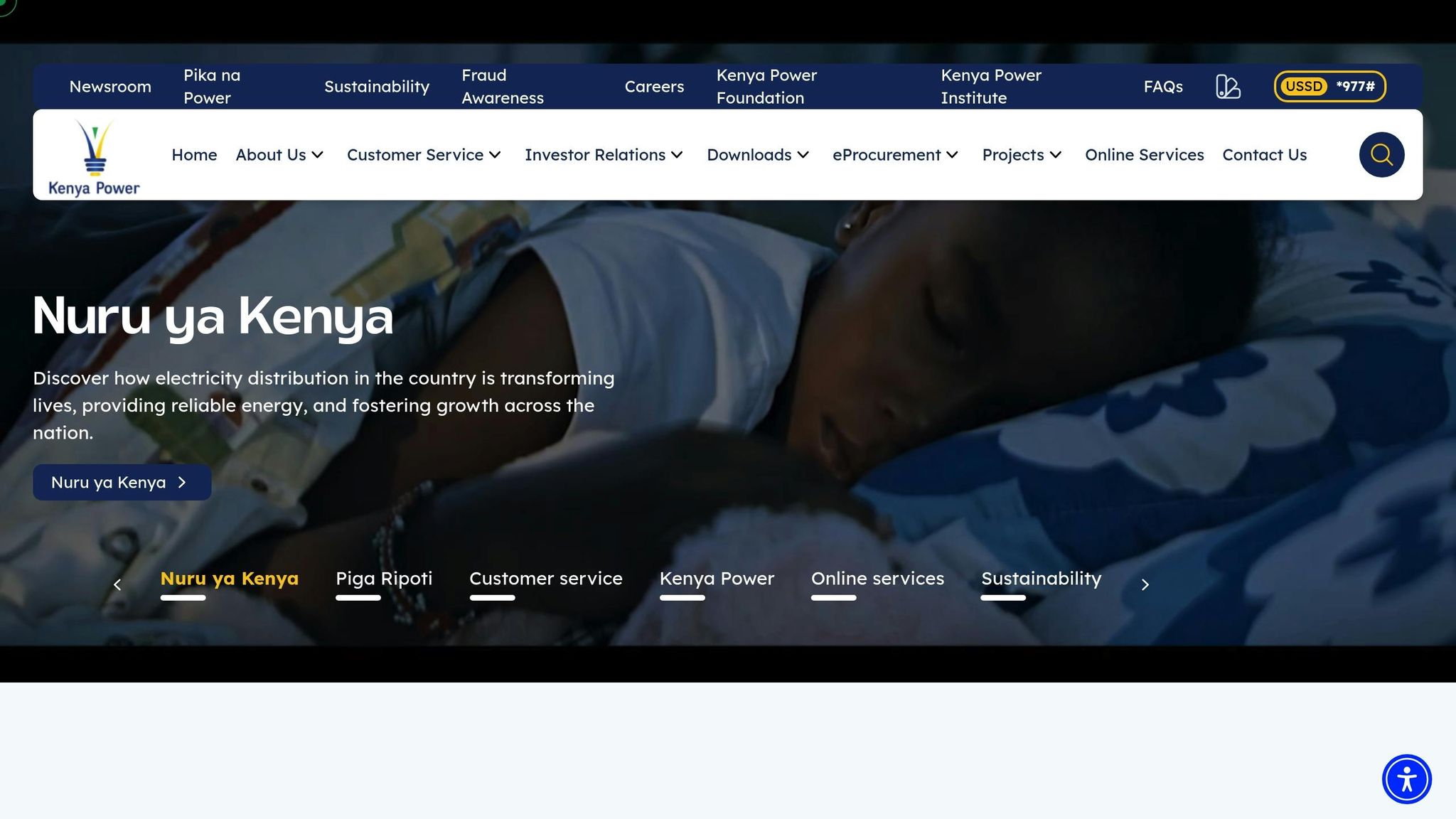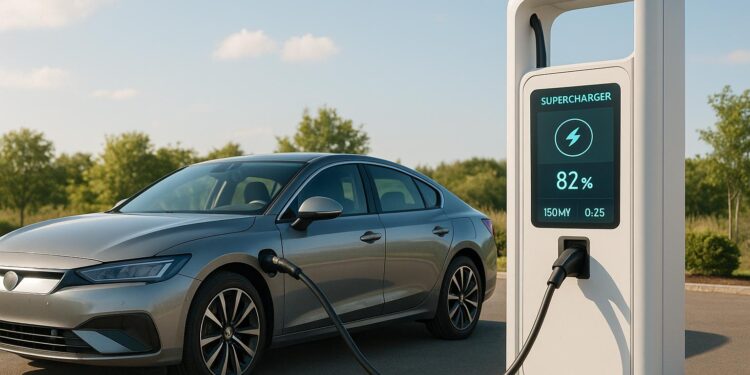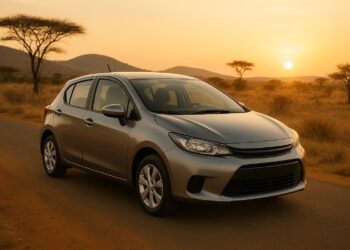ABSA Bank has launched Kenya’s fastest electric vehicle (EV) supercharger, addressing a major challenge in the country’s EV market: slow charging times. This initiative supports Kenya’s shift to cleaner transportation by significantly reducing charging durations, making EVs more practical for daily use and long trips. Key highlights include:
- Charging Speed: Reduces charging time from hours to minutes, improving convenience for EV owners.
- Compatibility: Supports multiple EV models and global charging standards like CCS2 and CHAdeMO.
- Strategic Location: Positioned near major highways, ensuring easy access for commuters and long-distance travelers.
- Payment Options: Flexible methods, including mobile payments and digital wallets, simplify the process.
- Environmental Impact: Contributes to reduced emissions, aligning with Kenya’s clean energy goals.
This move positions ABSA as a key player in Kenya’s EV ecosystem, with plans to expand its charging network and further support the country’s growing EV market.
Kenya Power launches Sh6.5 million electric vehicle charging station in Nairobi

Supercharger Specifications and Technical Details
ABSA has introduced Kenya’s fastest EV supercharger, a move that significantly reduces charging times and advances the country’s EV infrastructure. This cutting-edge development directly tackles the challenges previously highlighted in Kenya’s charging network. Here’s a closer look at the charger’s performance, compatibility, and safety features.
Power Output and Charging Speed
The supercharger’s fast-charging capability dramatically shortens charging sessions, addressing a key pain point for EV owners. Current charging setups often struggle to keep up with the needs of four-wheeled electric vehicles, which typically take longer to charge. For instance, BasiGo‘s electric buses in Nairobi rely on charging hubs that can support a range of 250 kilometers (about 155 miles) in under two hours. For everyday drivers, faster charging means greater convenience during brief stops, making EVs more practical for both daily commutes and longer road trips.
Vehicle Compatibility and Charging Standards
Beyond speed, this supercharger is designed to work with a variety of EV models, thanks to its support for multiple charging protocols. It complies with new regulatory guidelines and accommodates popular standards like CCS2, CHAdeMO, CCS1, OCPP, and ISO 15118. This ensures compatibility with a wide range of vehicles, from two- and three-wheelers to the growing number of four-wheeled EVs expected in Kenya. By 2025, Kenya’s EV market is projected to include around 1,000 vehicles, primarily electric motorcycles and tuk-tuks. The supercharger’s flexibility positions it to meet the demands of this expanding market.
Anari Energy has highlighted the challenges caused by the lack of finalized regulations for charging standards, saying:
The lack of finalized regulations for charging standards, such as connector types (e.g., CCS2, CHAdeMO) and interoperability protocols like OCPP, creates uncertainty for investors.
Experts also recommend that Kenya:
Adopt global standards like OCPP and ISO 15118
to improve both compatibility and safety across the EV ecosystem.
Technical Features and Safety Systems
While specific technical details remain under wraps, the supercharger is built to meet international safety standards and follows industry best practices. This ensures a reliable and secure charging experience for all users.
Location and Access Information
Getting to ABSA’s new supercharger is simple, thanks to its clear location details and user-friendly features. It’s designed to be a convenient stop for EV drivers throughout Kenya.
Location and Nearby Landmarks
ABSA has chosen a prime spot for its supercharger, making it accessible to both local and long-distance travelers. The station is situated close to major highways and recognizable landmarks, ensuring it’s easy to find even with basic navigation tools. Its location near arterial roads adds to the convenience, especially for those on extended trips.
By placing the supercharger strategically, ABSA has made it a seamless addition to Kenya’s growing EV infrastructure, reducing the stress of finding charging options during longer drives.
Operating Hours and Payment Options
The station is open from early morning until late evening, catering to a wide range of schedules. Whether you’re a commuter or a road tripper, you’ll find it operational when you need it. Payment is straightforward, with options including major credit cards, mobile payments, and digital wallets. Charging costs are calculated based on the kilowatt-hours used.
Starting a charging session is easy with a quick mobile or web registration. To avoid potential delays, consider planning your visit outside peak hours, which often coincide with busy commuting times.
Navigation and Directions
Finding the station is hassle-free. GPS systems can pinpoint its location, and mobile apps provide real-time updates on availability and status, making it simple to plan your visit even if you’re unfamiliar with the area.
For those traveling longer distances, the station’s placement along Kenya’s major highways ensures it’s a convenient stop without requiring significant detours. It’s a practical choice for intercity travel, keeping your journey smooth and uninterrupted.
Impact on Kenya’s EV Market
ABSA’s introduction of the fastest EV supercharger in Kenya directly addresses a major hurdle: the lack of adequate charging infrastructure. This development not only reduces charging times but also fills a critical void in the country’s EV market.
Tackling Infrastructure Challenges
Kenya has largely depended on Level 2 chargers, which require three to five hours to fully charge vehicles like the Nissan Leaf. The new supercharger’s rapid charging capability significantly cuts down this time, marking a big step forward in building a more efficient and reliable EV ecosystem in the country.
sbb-itb-e5ed0ed
How to Use the Supercharger: User Guide
The supercharger is designed to make charging your EV as simple and efficient as possible. Just follow the on-screen and on-site instructions, and you’ll be good to go. Here’s everything you need to know about the charging process, staying safe, and getting the best performance.
Charging Process Overview
Start by parking your EV in the designated charging spot. Once parked, follow the on-screen steps to connect your vehicle. You’ll need to authenticate your session using an approved payment method. Once the system confirms a secure connection, your charging session will begin automatically.
Safety and Equipment Care
Treat the charging equipment with care to ensure everything works smoothly. Avoid forcing the connector into your vehicle or trying to remove it before the system confirms the session has ended. If you notice any issues – like damage to the equipment or something not working as it should – let the on-site service staff know right away.
Performance Tips
For the best results, stick to your vehicle’s charging recommendations and follow any on-site instructions. Doing so not only helps your battery charge efficiently but also keeps it in good condition over time.
Environmental Benefits and Future Plans
ABSA’s new supercharger technology not only speeds up charging but also helps reduce emissions and noise pollution. This effort contributes to cleaner air, better energy use, and quieter transportation across Kenya.
Carbon Emission Reduction
Switching to EVs significantly cuts carbon emissions. On average, each EV reduces emissions by 4–5 tons annually compared to gasoline-powered vehicles. With Kenya’s EV fleet now exceeding 15,000, this translates to a yearly reduction of about 60,000 tons of CO₂ emissions. ABSA’s faster charging solutions make EV ownership even more convenient, encouraging further adoption. Plus, Kenya generates more than 90% of its electricity from renewable sources like hydroelectric, geothermal, and solar energy, ensuring that EVs charged in the country maximize their environmental advantages. The current EV fleet has already contributed to an 8% reduction in particulate matter emissions in major cities. By 2030, increased EV usage is expected to cut transport-related emissions by 15%, aligning with Kenya’s goal to achieve a 30% overall reduction in carbon emissions by the same year. These numbers highlight the tangible impact of ABSA’s efforts in promoting sustainable transportation.
ABSA’s Expansion Plans
While ABSA has yet to share specific details about expanding its EV charging network, this initial rollout marks a key step in transforming Kenya’s electric vehicle landscape. Future plans, including new locations and timelines, will be revealed in due course. This initiative reflects ABSA’s broader environmental vision and its dedication to advancing sustainable mobility solutions across the country.
Conclusion: Kenya’s EV Infrastructure Progress
ABSA’s introduction of Kenya’s fastest EV supercharger marks a significant step forward in the country’s charging network. By reducing charging times, it addresses one of the key hurdles to widespread EV adoption and makes electric mobility more accessible and efficient.
With its high-performance capabilities, this supercharger sets a fresh benchmark for partnerships aimed at advancing clean energy solutions. Kenya’s growing EV ecosystem is becoming more practical, supporting both short daily drives and longer road trips with reliable fast-charging options.
As the country continues to invest in renewable energy, every EV charged contributes to lowering carbon emissions and improving air quality. Looking ahead, ABSA is gearing up to expand its charging network, further shaping the future of Kenya’s automotive landscape.
FAQs
How does ABSA’s new supercharger make electric vehicles more practical and accessible in Kenya?
ABSA has introduced a new supercharger in Kenya, making electric vehicles (EVs) much more practical for everyday use. By cutting charging times down to just 15–30 minutes, this development eases range anxiety and ensures EV drivers spend less time waiting. Whether it’s a daily commute or a long road trip, this technology brings added convenience to EV owners.
With ultra-fast charging speeds of 150 kW or more, the supercharger makes longer journeys more feasible and encourages wider EV adoption across the country. Beyond boosting accessibility to EV infrastructure, this move also supports Kenya’s efforts to lower greenhouse gas emissions and advance cleaner, more sustainable transportation options.
What environmental advantages does ABSA’s supercharger offer, and how does it support Kenya’s clean energy goals?
ABSA’s supercharger is making a real impact in cutting carbon emissions by giving electric vehicles (EVs) the ability to run on Kenya’s energy grid, which is powered by nearly 90% renewable energy. By replacing gasoline-powered cars with EVs, this shift not only reduces harmful emissions but also contributes to cleaner air and a healthier living environment.
This initiative is also in step with Kenya’s climate goals, which aim to cut transportation emissions by 32% by 2030 and achieve 100% renewable energy within the same period. By building up EV infrastructure, ABSA is actively supporting sustainable transportation and helping Kenya stay on track toward a greener and cleaner future.
What is ABSA’s plan for expanding EV charging stations in Kenya, and how could this impact the country’s electric vehicle market?
ABSA’s Push for EV Charging Infrastructure in Kenya
ABSA is making a bold move to boost Kenya’s electric vehicle (EV) charging network. The company has committed $1.9 million to establish 45 new charging stations across six counties by 2026. This effort ties into Kenya’s larger vision of setting up 10,000 EV charging stations nationwide by 2030.
This development is expected to play a key role in speeding up EV adoption in the country. Projections show the market value could jump from $50 million in 2025 to $250 million by 2030. By ensuring better access to fast and dependable charging options, ABSA is not only encouraging the shift to cleaner transportation but also contributing to growth in local manufacturing and the energy sector.
Related posts
- Guide to Electric Vehicle Charging Stations in Kenya
- EV Charging Stations in Nairobi: Where and How to Recharge
- Kenya opens East Africa’s first EV battery lab in Nairobi
- MojaEV launches NETA V electric car in Kenya




